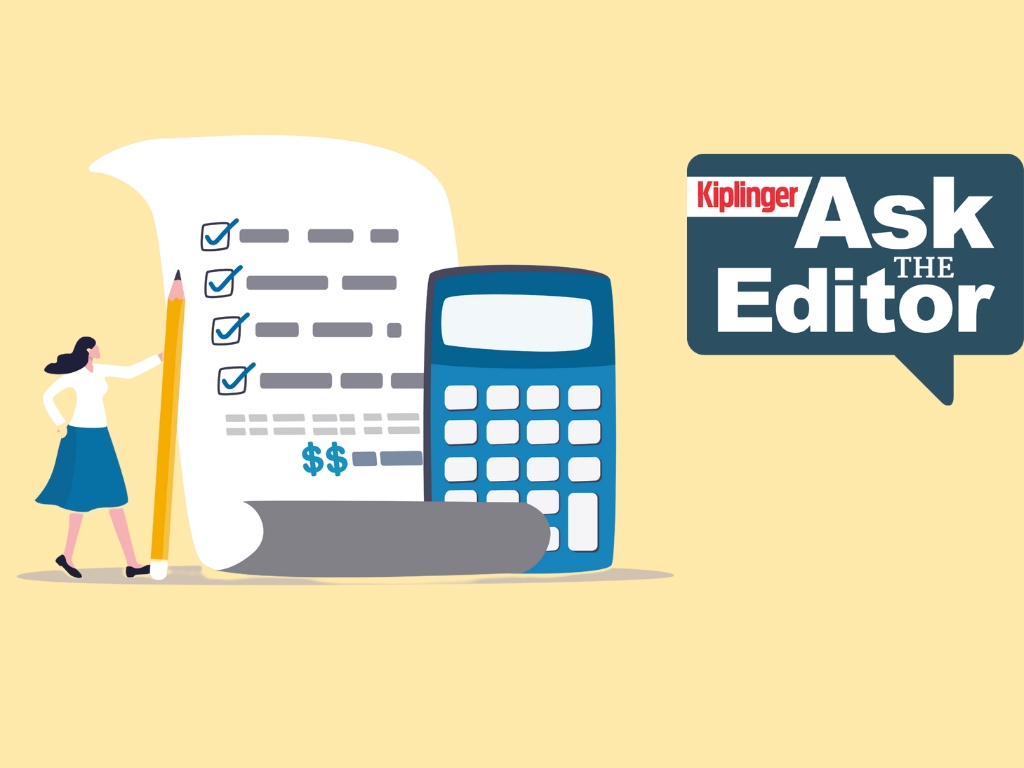RMDs: When Do I Take Them and How Do I Calculate Them?
Required minimum distributions are a fact of life that most of us will have to face sooner or later. Demystify them by brushing up on the basics now.


If you are close to reaching the age of 70½ and have an IRA, SEP IRA or a SIMPLE IRA, or other pre-tax employer-sponsored retirement accounts, you need to start thinking about the required minimum distributions that you will have to start taking from each account. If you have a Roth IRA, it does not require a withdrawal until after the death of the owner.
Calculating the amount is easy, and the required minimum distribution worksheets needed to determine the amount are located on the IRS website, or by checking out the links below. And you can double-check yourself by using a simple RMD calculator like the one on Kiplinger.com.
How Do You Calculate RMDs?
If your spouse is the sole beneficiary of your IRA and is more than 10 years younger than you, there is a specific worksheet to determine your RMD, which can be found here. This worksheet’s five-step process walks you through how to calculate the RMD for each individual account you have, so you can figure out your total required minimum distribution amount.

Sign up for Kiplinger’s Free E-Newsletters
Profit and prosper with the best of expert advice on investing, taxes, retirement, personal finance and more - straight to your e-mail.
Profit and prosper with the best of expert advice - straight to your e-mail.
Everyone else should use this worksheet. This is a quick and easy three-step worksheet to calculate your individual accounts to reach your total RMD.
All calculations are based on your life expectancy at the time of the necessary distribution, which can be found on the IRS life expectancy table linked within each worksheet.
In order to calculate your RMD correctly, you will have to know what each pre-tax IRA account’s ending balance was on Dec. 31 of the prior year, so make sure you have that information handy. As the account holder, you are responsible for accurately calculating the distribution amount, so be sure the figures are correct prior to completing your worksheets.
When Do You Take Your RMD?
If you will be turning 70½ in 2019, you need to be aware that you must take your required minimum distribution by April 1 of next year. Every year thereafter, your distribution must be completed by Dec. 31 of that year.
For example, if you turn 70 in June 2019, that would mean you are 70½ in December 2019, requiring your first distribution must be initiated by April 1, 2020. If you turn 70 in December 2019, you won’t be 70½ until June 2020, which means your first distribution must occur by April 1, 2021. As mentioned above, each subsequent distribution would need to be made annually by Dec. 31.
If you have any doubts, you can just plug your birthdate into the tool on Kiplinger.com to find out when your RMD is due.
Once you’ve determined your RMD for all your individual accounts, you can decide if you would like to make the withdrawal from one or more of these accounts. The IRS does not care which accounts the money comes from — just one account or a combination — as long as you withdraw the total amount to meet the required minimum distribution.
Some Important Things to Consider
If you are 70½ or older and still working, you don’t have to take RMDs under certain circumstances. If you have an employer-sponsored 401(k) or 403(b) and own less than 5% of the company, you can continue to contribute and choose to not take RMDs from that account. You will have to take distributions once you leave that employer.
If you inherited a traditional IRA from a loved one who was over 70½ and subject to RMDs, you may be subject to RMDs as well. More information can be found here on the IRS website.
If you inherited a Roth IRA, your options vary depending on whom you inherited it from and how old they were when they died. This chart on the IRS website can help determine when and how you need to take the required minimum distribution. Read it carefully and consult a tax adviser if you aren’t sure because you can be penalized 50% of the distribution amount for failure to take the RMD.
Once you have your calculated required minimum distribution, you are allowed to take out any amount above that figure, however, the excess distribution cannot be applied toward future required minimum distributions.
You will not have to pay taxes on any Roth IRA distribution because you initially funded those accounts with post-tax dollars. If you have a combination of pre-tax and post-tax accounts, take each into consideration when deciding to withdraw any amount over your required minimum distribution, and how that excess will affect your tax liability. It is important to revisit this every year.
Get Kiplinger Today newsletter — free
Profit and prosper with the best of Kiplinger's advice on investing, taxes, retirement, personal finance and much more. Delivered daily. Enter your email in the box and click Sign Me Up.

Marguerita M. Cheng is the Chief Executive Officer at Blue Ocean Global Wealth. She is a CFP® professional, a Chartered Retirement Planning Counselor℠ and a Retirement Income Certified Professional. She helps educate the public, policymakers and media about the benefits of competent, ethical financial planning.
-
 Retire in France for Beauty and Culture
Retire in France for Beauty and CultureFrance offers a great history and a slower pace of life for retirees. At times, it can feel like stepping into a postcard.
By Brian O'Connell
-
 Walmart+ Week 2025: Top Deals, Streaming Perks and Member-Only Savings
Walmart+ Week 2025: Top Deals, Streaming Perks and Member-Only SavingsWalmart+ Week runs April 28 –May 4 with fuel savings, free express delivery and six months of Paramount+ with SHOWTIME. See all the perks.
By Choncé Maddox
-
 To Stay on Track for Retirement, Consider Doing This
To Stay on Track for Retirement, Consider Doing ThisWriting down your retirement and income plan in an investment policy statement can help you resist letting a bear market upend your retirement.
By Matt Green, Investment Adviser Representative
-
 How to Make Changing Interest Rates Work for Your Retirement
How to Make Changing Interest Rates Work for Your RetirementHigher (or lower) rates can be painful in some ways and helpful in others. The key is being prepared to take advantage of the situation.
By Phil Cooper
-
 Within Five Years of Retirement? Five Things to Do Now
Within Five Years of Retirement? Five Things to Do NowIf you're retiring in the next five years, your to-do list should contain some financial planning and, according to current retirees, a few life goals, too.
By Evan T. Beach, CFP®, AWMA®
-
 The Home Stretch: Seven Essential Steps for Pre-Retirees
The Home Stretch: Seven Essential Steps for Pre-RetireesThe decade before retirement is the home stretch in the race to quit work — but there are crucial financial decisions to make before you reach the finish line.
By Mike Dullaghan, AIF®
-
 Ask the Editor: Reader Questions, April 25 — 529 plans
Ask the Editor: Reader Questions, April 25 — 529 plansIn our latest Ask the Editor round-up, Joy Taylor, The Kiplinger Tax Letter Editor, answers questions related to 529 plans.
By Joy Taylor
-
 Three Options for Retirees With Concentrated Stock Positions
Three Options for Retirees With Concentrated Stock PositionsIf a significant chunk of your portfolio is tied up in a single stock, you'll need to make sure it won't disrupt your retirement and legacy goals. Here's how.
By Evan T. Beach, CFP®, AWMA®
-
 Before You Invest Like a Politician, Consider This Dilemma
Before You Invest Like a Politician, Consider This DilemmaAs apps that track congressional stock trading become more popular, investors need to take into consideration some caveats.
By Ryan K. Snover, Investment Adviser Representative
-
 How to Put Together Your Personal Net Worth Statement
How to Put Together Your Personal Net Worth StatementNow that tax season is over for most of us, it's the perfect time to organize your assets and liabilities to assess your financial wellness.
By Denise McClain, JD, CPA